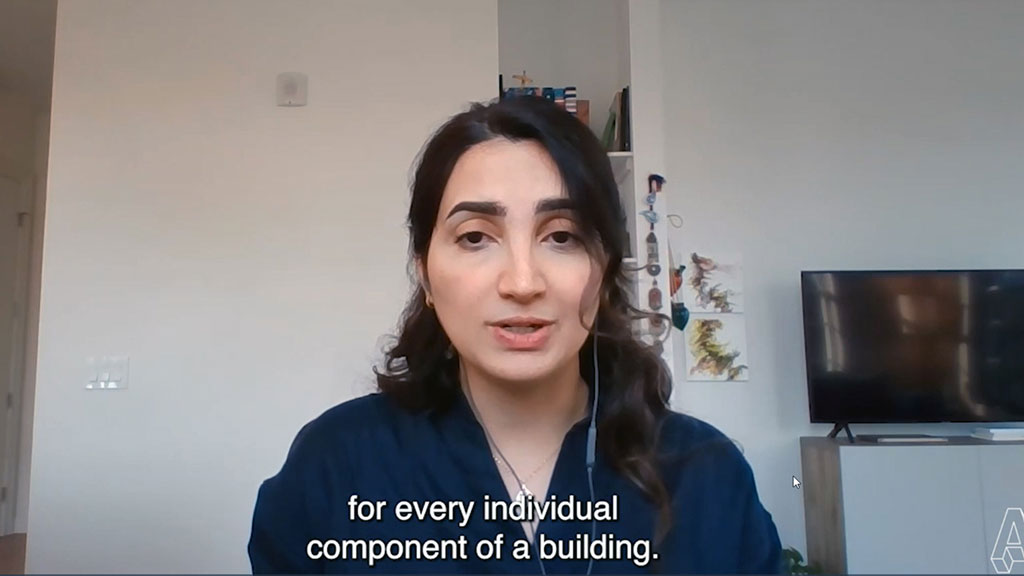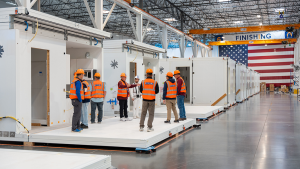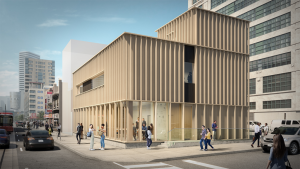The green building sector is evolving at lightning speed with new products, tools, regulations, certifications and standards emerging all the time, and American architects have to be prepared to move fast and be ready for the next wave.
That was the key point driven home by webinar host Leila Pourzahedi, a lifecycle assessment lead with Owens Corning, during a recent session billed as The State of Climate Action in the Building Sector: How Architects Can Make a Difference. She was speaking on the final day of the American Institute of Architects Conference on Architecture.
“There is a lot of work to be done in this space for the building industry to move in a direction and at a speed that is aligned with global targets and timelines,” Pourzahedi said. “We need immense co-operation across the whole value chain, we need to raise awareness about the importance of embodied carbon and provide education where needed to improve our capabilities.”
Pourzahedi offered a global perspective on various movements and government initiatives because the sector is moving so quickly with so many important players. The European Union, for example, issued significant new guidelines just in July and U.S. President Joe Biden has made it clear that the U.S. will be a full participant in efforts to find global solutions to combat climate change.
Biden introduced an executive order protecting public health and the environment and restoring science to tackle the climate challenge immediately upon becoming president in January, and he has also issued orders on climate-related financial risk and on tackling climate change at home and abroad. His infrastructure plan also supports extensive green building and at the state level, there is a patchwork of U.S. Climate Alliance jurisdictions, mainly in the north, northeast and west.
Marin County in California has already implemented Buy Clean legislation and a handful of others have introduced embodied carbon policies.
“We obviously have regulations coming down the pipeline,” Pourzahedi said.
“Innovation and regulatory development are also necessary components of the whole plan. We have to make a meaningful change and accelerate climate action.”
Various institutions around the world have committed their members to reaching the Paris agreement target of a drop in global CO2 emissions of 7.6 per cent by 2030 to achieve a 1.5 C global-warming target.
Important global standards that architects should consider include those from the World Resources Institute’s Zero Carbon Buildings For All initiative, the World Green Building Council’s Whole Life Carbon Vision, and the Global Alliance for Buildings and Construction’s Roadmap for Buildings and Construction 2020-2050, Pourzahedi suggested.
Such leadership is paying off but much more needs to be done, she said.
“We’ve made significant strides so far throughout the years to improve energy efficiency in buildings, both in the residential section and in the commercial space. We continue to do so with every new generation of building codes. Our buildings are now using 40 to 50 per cent less energy compared to the ‘70s. And less energy use means less greenhouse gas emissions.”
With greater regulation certain to come, Pourzahedi urged architects to boost their adoption of green building certifications and reporting structures, escalate their examination of the materials they use, and realize that positive actions create increased goodwill in a world that increasingly values such efforts.
“Manufacturers are doing extensive work to reduce their carbon footprint, and they often have their own sustainability goals,” said Pourzahedi.
As part of their lifecycle analysis, architects must employ data to map relevant emissions and be open to using the best available software to speed up calculations.
Pourzahedi identified five strategies for architects to follow to ensure the required change takes place: collaboration — establishing roadmaps to form a common vision; communication — raising awareness and building capacity; education — addressing foundational gaps in skills, data and benchmarks; innovation — creating new business models, new technologies and circular patterns; and regulation — mandating reductions in embodied carbon that are aligned with decarbonization pathways.
“There are plenty of resources out there for us to use to make sustainable decisions when it comes to buildings in construction, and the steps necessary to consider when trying to move the needle on the impacts of the building industry on climate change,” said Pourzahedi.
Follow the author on Twitter @DonWall_DCN.











Recent Comments
comments for this post are closed